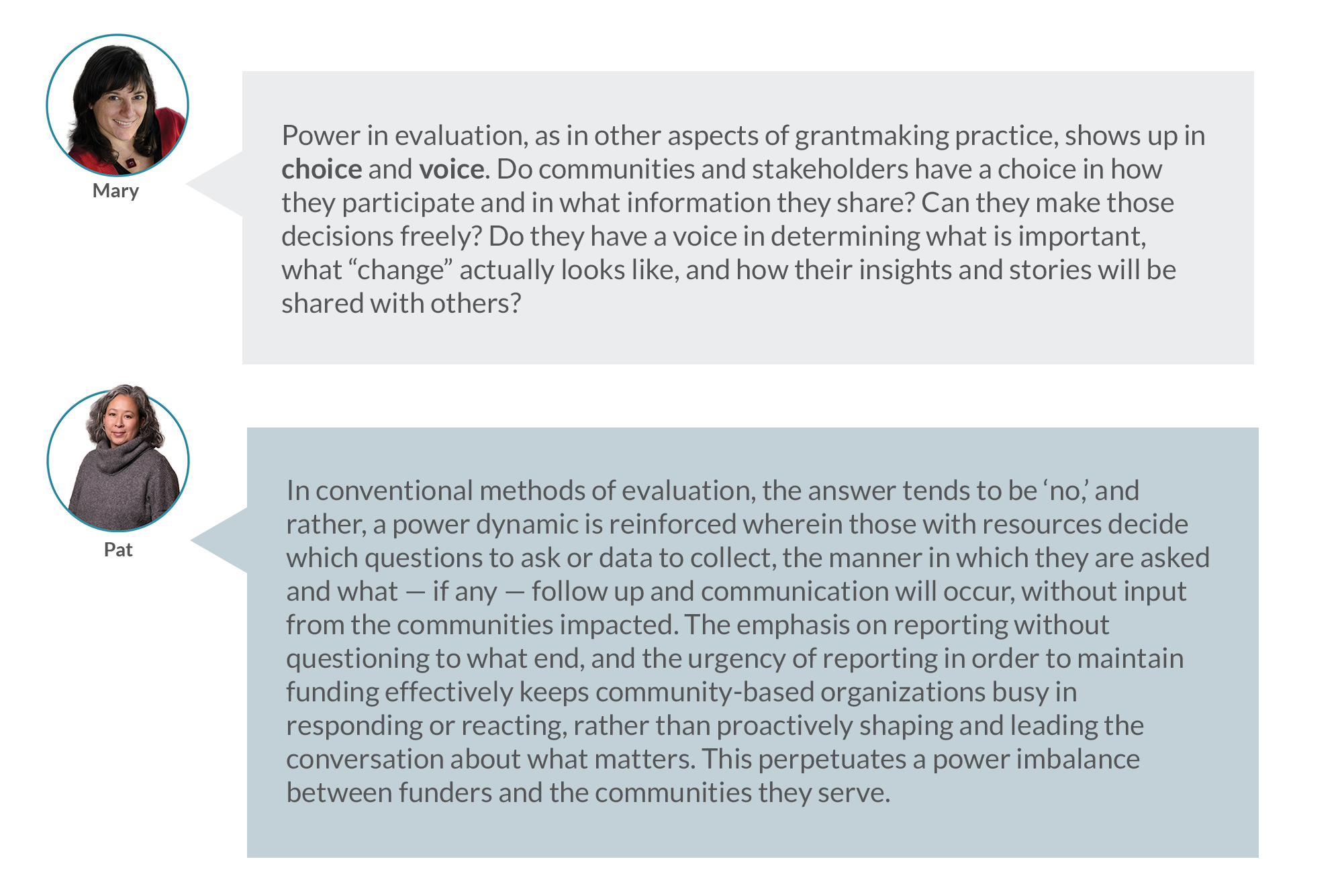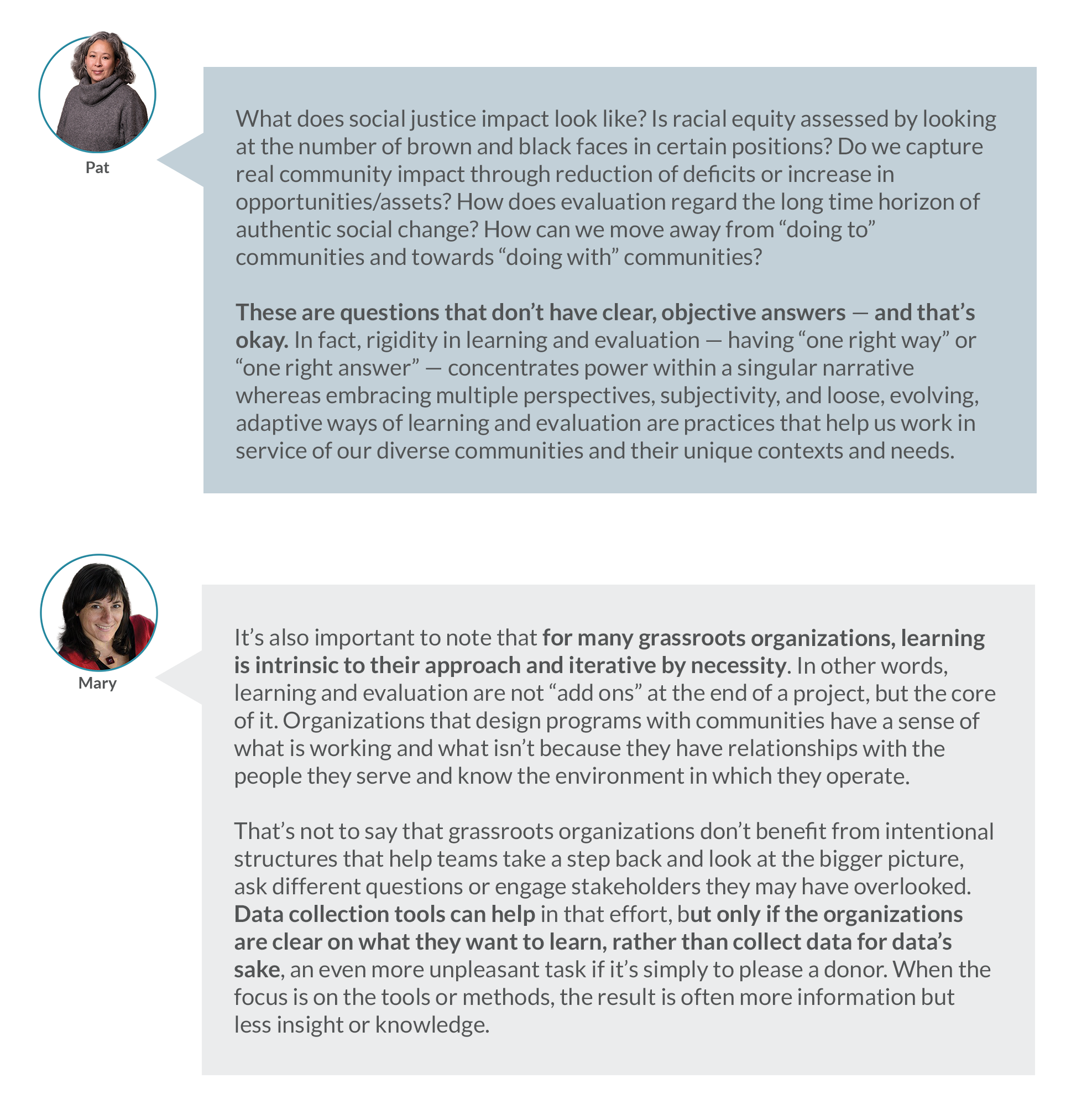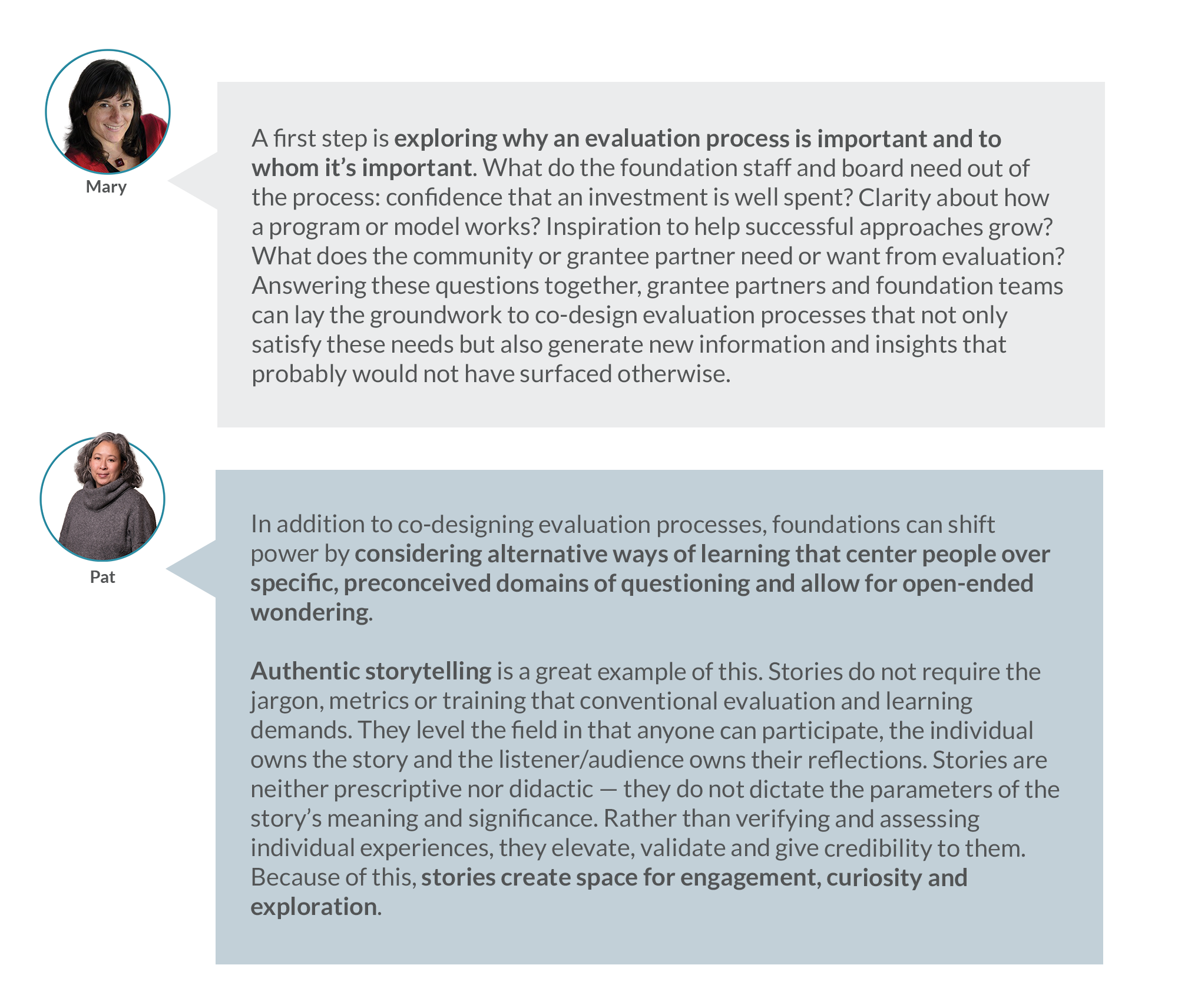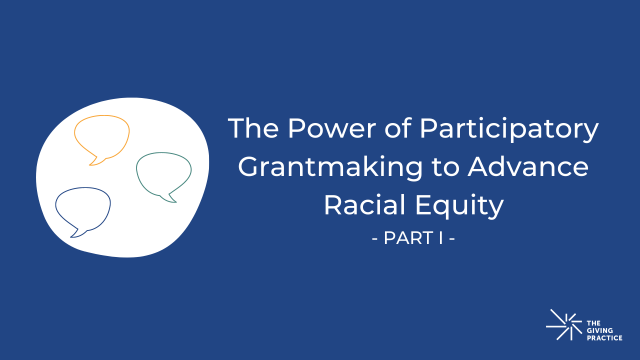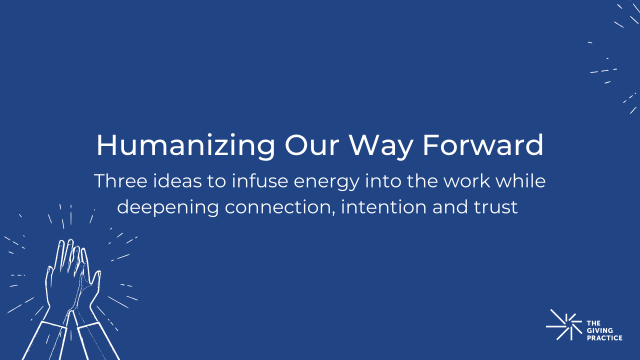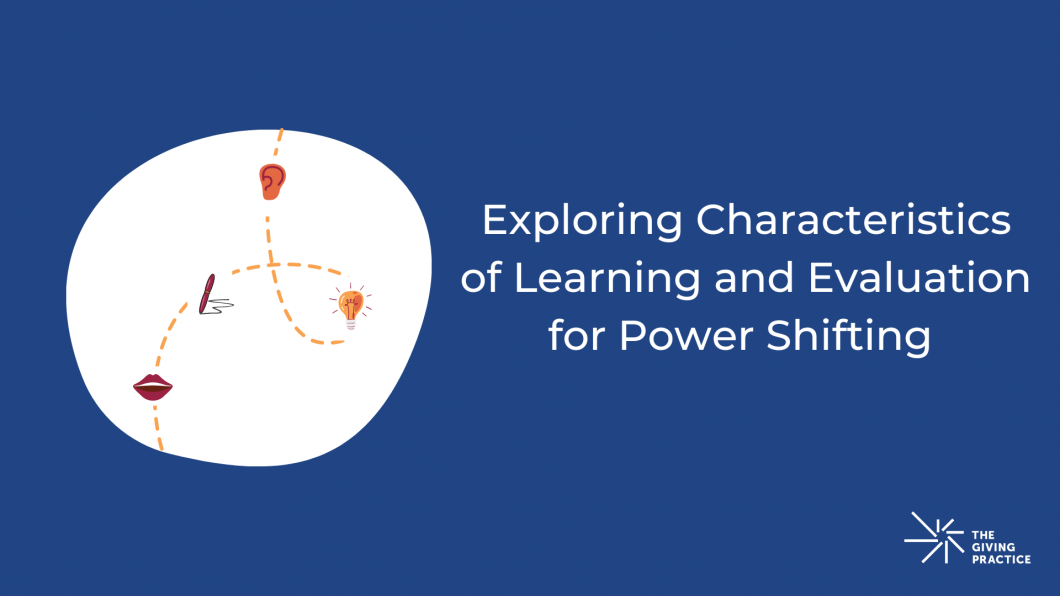
Search for “Evaluation and Learning Frameworks” in Google and at the top of the results you’ll find a list of scholarly articles including empirical reviews and research papers.
“The professionalizing of evaluation…doing controlled trials, using rigid scientific, academic processes tends to mystify the work and exclude people from it,” Senior Advisor Mary Fifield says, “and it raises the question of power dynamics.”
This “gold standard” of evaluation, rooted in academia, has long been determined by dominant culture — those in power. “When the work of our sector includes power shifting, the onus is on us to demystify these conventional ideas of evaluation and ideas of impact. Unpack it, dismantle it and reframe it in a way that works in service of community,” Senior Advisor Pat Vinh-Thomas adds.
Below, Mary and Pat explore how foundations can lean into learning and evaluation that shift and share power:
Where and how does power show up in evaluation?
What does evaluation that shifts power to community look like?
How can foundations examining their own learning and evaluation practices begin to explore or deepen a powershifting frame?
If you are seeking partnership and support in your learning and evaluation work, please don't hesitate to reach out to us at hello@thegivingpractice.org.
Join our mailing list to stay up to date on our latest reflections, insights, interviews and more.


